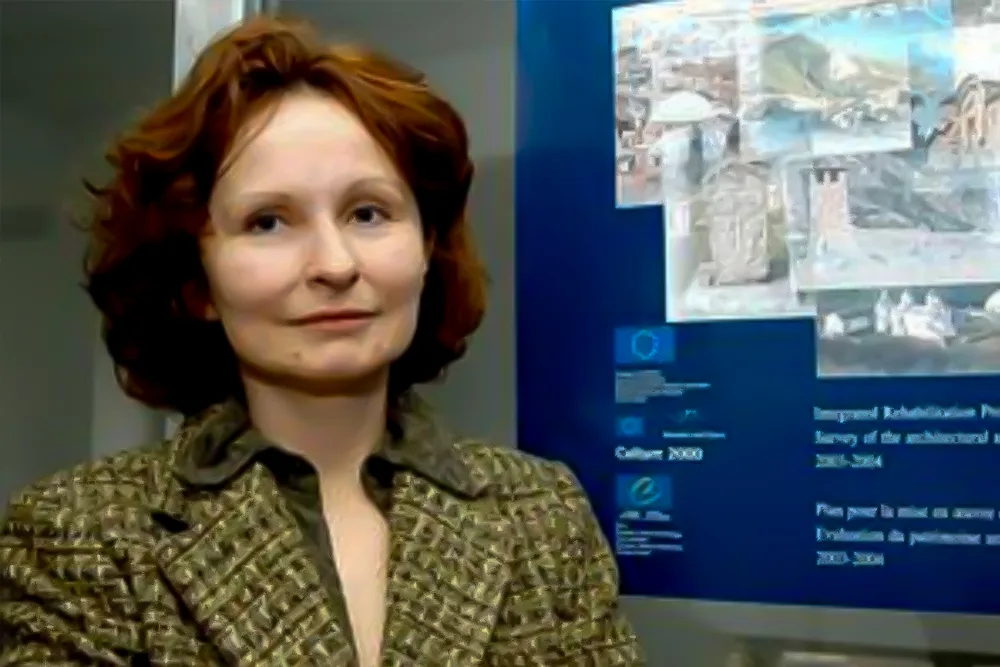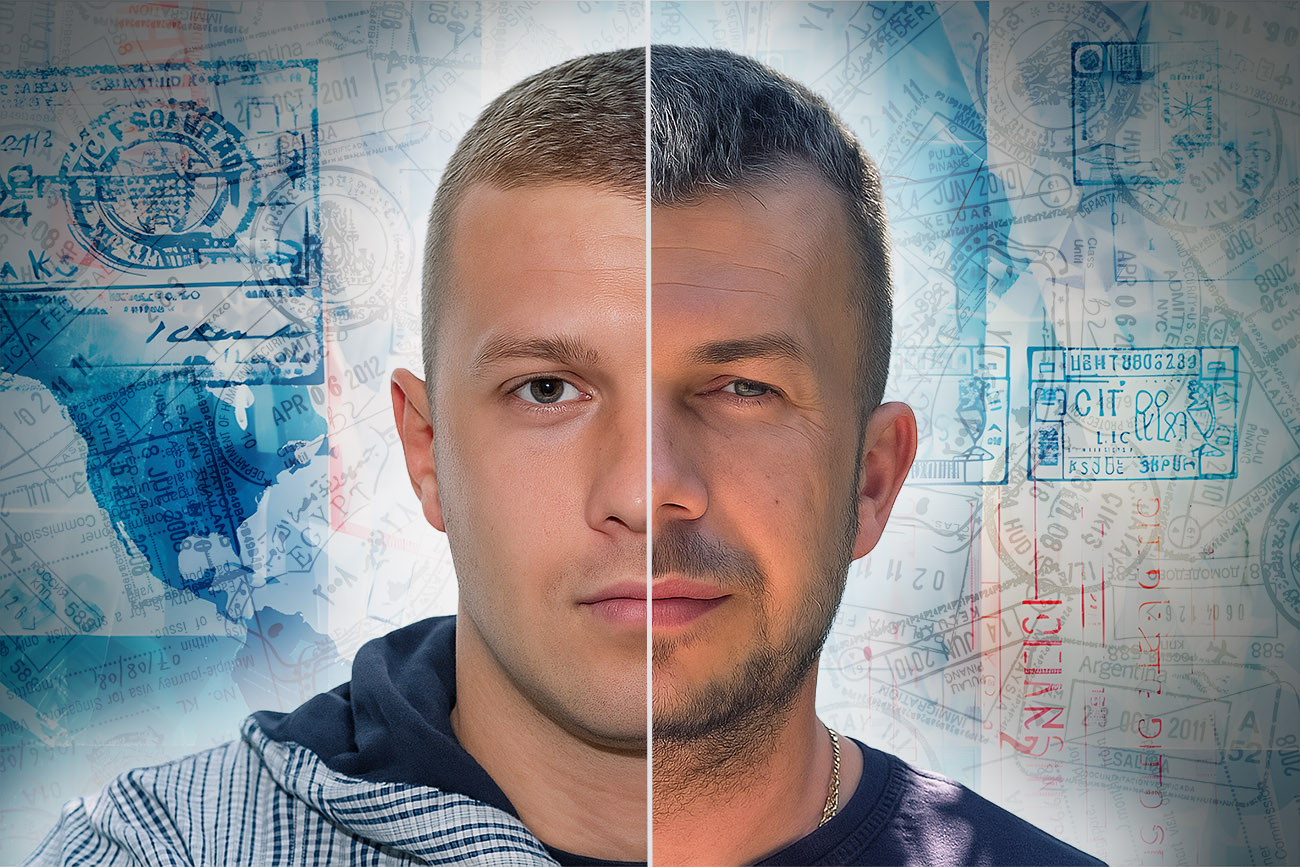By 2002, when the former republic of BiH’s cultural fund was put out of business, they had counted 2771 cultural objects, monuments, archeological sites and buildings that had been destroyed or damaged during the war.
Today, four more lists and six cultural funds and commissions later (and one more proposed), government officials and experts alike still cannot agree on what should be part of BiH’s cultural history, and how it should be saved.
A state level commission started in 2002 and two entity institutes are locked in a battle over administrative and financial control of preservation of the country’s heritage.
Don't want to miss our stories?
Sign up for our newsletter.
Don't want to miss our stories?
Sign up for our newsletter.
‘The state commission has not defined its powers and often its powers are overlapping with those of the FBiH Institute for Cultural Heritage’ said history professor Enver Imamović, who is an archeology expert at the University of Sarajevo. ‘As a result of this the cultural heritage is crumbling.’
In January, the FBiH culture minister took away the entity institute’s independence, which brought the omnipotence of the state commission one step closer. At the same time, the state commission held a meeting aimed at authoring legislation that would give complete preservation control to the state level authority.
Late last year, The High Representative Paddy Ashdown, reminded the Council of Ministers that protecting the country’s cultural sites and institutions was a requirement of the Dayton Accords. Much as he has directed for defense and police authorities, Ashdown suggested that the preservation responsibility be handled by a state level institution.
Ashdown’s comments focused on the seven cultural institutions, including the National Museum, that were closed or near bankruptcy last year. This month, the parliament and Sarajevo canton came up with 1.9 million KM to reopen museum doors. The National Museum was reopened and the Historical Museum is scheduled to reopen soon, according to Civil Affairs Minister Safet Halilović.
But a permanent solution to the funding problem may become another prisoner of entity politics.
Before the re-funding of the museum, Gavrilo Grahovac, the FBiH Minister of Culture said he was pessimistic about future support for even this well-recognized heritage institution because of a lack of funding that comes from political paralysis.
‘The National Museum is relevant for the entire BiH but RS (state) ministers do not want it’ Grahovac said.
Mladen Ivanić, president of the PDP party in the RS, refused to comment on the charge by Grahovac. But his spokeswoman, Lepa Babić, said Ivanić would support financing of cultural institutions if some of them were located in the RS.
Beyond the politics, what is at stake is not only saving a heritage for new generations but also the cultural image of the country and the economic boost that comes from successfully marketing that image.
This story is part of a series of seven articles, “Losing Culture,” in which a team of eight reporters from the Center for Investigative Journalism in Sarajevo (CIN) takes an in-depth look at BiH’s postwar approach to restoring and protecting the sites, objects and institutions that make up the country’s cultural heritage.
The CIN team found that government has no systematic way of approaching the protection of the country’s heritage, or the promotion of culture to improve the nation’s image and encourage industries such as tourism and filmmaking. Meanwhile, the nation’s future, its’ children, are getting a highly politicized view of their cultural history.
The deterioration of cultural monuments is not the only way that this heritage is being lost, according to experts and government officials. Historical objects, such as the 12th century document that first mentioned Bosnia and Herzegovina as a country, have found their way to the museums and galleries of other countries.
The state commission’s answer is to propose yet another commission to make yet another list of objects in foreign possession.
FBiH expects to spend 3 million KM this year for reconstruction of national monuments designated by the state commission. The RS has designated 500,000 KM for items on its list.
It is impossible to estimate the total cost of saving the buildings and institutions that were damaged in the war, and since then from neglect, according to Professor Imamović. But the cost for just one project can range from 350,000 KM to restore the façade of the Franciscan monastery in Fojnica, to 20 million KM for the restoration of Sarajevo City Hall.
The immensity of the restoration effort is equaled only by its importance, according to world heritage expert archeologist Bruce Hitchner from Boston University in the U.S.
BiH history is rich in cultural heritage from prehistory through the Roman, Byzantium, Medieval and Ottoman periods, Hitchner said in an interview.
“It is as significant as the heritage of any other European country with a long cultural and historical tradition,” Hitchner said.
BiH’s cultural identity will also become politically crucial as it tries to join the European Union with countries with clear identities from carefully preserved pasts, Hitchner added.
No matter which list you use, the roll call of cultural destruction is a long one.
During the last war, buildings from the 15th through 18th centuries sustained the greatest damage, followed by those from the 19th century Austro-Hungarian period, according to Mirela Mulalić Handan, an executive official in the state Commission for the Preservation of Cultural Heritage.
These buildings, valued by experts as a heritage of international importance, were primarily located in the central parts of Sarajevo, Mostar and Jajce. Other important sites were destroyed in the centers of Stolac, Banja Luka and Foča, Handan added.
Out of 58 of the most valuable mesdžids and tekijas, Islamic ceremonial buildings, 22 were completely demolished, and the others were significantly damaged.
Of the 40 most valued churches, monasteries and cloisters, built from the 15th to the 19th centuries, five are demolished and four are considerably damaged, according to a state commission report. Two synagogues in Sarajevo are also partially damaged.
What the war did not destroy, neglect is threatening to finish off.
There are records of more than 50,000 of the large cemetery monuments from the Middle Ages, called “steæci.” But only 2,000 remain in various stages of deterioration, according to the FBiH institute. The most notable is the highly decorated cemetery in Radimlje near Stolac with pieces from the 15th and 16th centuries, which Professor Imamović calls ‘the most monumental tombstones in Europe.’
Part of Radimlje is now being used as a garbage dump and the rest is threatened by nearby construction.
In the town of Ripač, the remnants of a prehistoric settlement discovered at the end of 19th century, are also being destroyed by the construction of roads, orchards and a Muslim graveyard, according to a state commission report.
In some cases, BiH’s heritage is literally crumbling away.
A housing project in Jajce is located within the shadow of a 15th century fortress’ massive stone walls, which are threatening to collapse on top of the residents.
“A year ago four square meters of the wall’s stone blocks collapsed literally one millimeter from one house,” said Edvard Sklenar, a resident of Jajce.
Dubravko Lovrenović, a former president, and now member of the state commission, said that the last preservation work on cemeteries he can remember was done 20 years ago in Radimlja and nothing has been done since.
‘Everything is in very dilapidated state, from the cemeteries to the stecaks, and everything is in a state of a rapid deterioration,” said Lovrenović. ‘There is not one ancient cemetery that is one bit protected.’
Even when experts are available and willing to help restore sites, the lack of a coordinated government preservation policy ties their hands, according to one archeologist, who was summoned to Mošunj near Vitez to look at some local discoveries in 2002.
For years, village residents had been finding Roman, Illyrian and early Christian artifacts in about 20 locations in the town, according to Žarko Bošnjak, a veteran tourism official from Vitez. Residents even found a bronze sword from the 10th century, which was incorporated into the design of the Mošunj coat of arms.
Residents, led by a local historical writer who believes that a 4th century village lies buried below the town, begged government officials to sponsor a real excavation of the sites.
After Snježana Vasilj, an archeology professor at the University of Sarajevo, visited the town in 2002, she offered to excavate the sites if the town would agree to the project. But town officials protested that they would have to spend thousands of KM for a full scale project, which used to be paid for by government ministries before the war.
But Vasilj said costs could be minimized with a little creative thinking.
She said she suggested to the town that she would work without compensation, and government employees from the local utility company could be used for most of the digging.
The town still turned Vasilj’s offer down.
‘Archeology is the saddest profession as none of the institutions, which should take care of archeological monuments, works’ Vasilj said. ‘There is no (single) law on preservation of monuments, and no one can give permission for archeological excavations.’
The power struggle between the state commission and the entity institutes has helped bring preservation efforts to the kind of stalemate Vasilj experienced.
The state commission was set up by the Presidency in 2002 to replace a politically balanced commission that had been created by the Dayton Accords in 1996.
The state commission has experts with backgrounds in preservation rather than politicians, said Handan.
The state commission has five members: three from BiH, an architect and two historians; and two internationals, an architect historian from Turkey and a preservationist from Sweden.
Two separate institutes were created to fund preservation at the entity level.
The state commission has the sole authority to declare a national monument. But the commission, which receives no restoration funding from the government, is dependent on the entities to actually do any preservation work.
“The state commission does nothing other than a pure inventory of cultural monuments and it orders preservation projects that have to be carried out by entity institutes,” said Fahrudin Rizvanbegović, a former commission president and former FBiH culture minister.
The entities and the state commission, however, do not agree on what needs to be protected.
The FBiH Institute inherited the official heritage register that had been kept by the federal republic’s preservation fund in the former Yugoslavia.
That register currently lists 2,771 historical sites and objects.
The original state commission created in 1996 took only 777 of the items for their list.
But the current state commission considered that list too political and has so far designated only 230 items as worthy of national protection and state ownership.
But the FBiH institute director insists that the Federation already has the only complete list, the original register, and the institutional knowledge from before the war about the history of the sites and objects.
The commission and the institutes are also fighting over who will control the historical records, including original blueprints that are needed for restorations, according to the FBiH institute’s director.
“We have the registry (of 2771 items), but the Commission has never asked us for it,” claimed Lamija Abdijeviæ, director of the FBiH Cultural Fund, who used to work in the old pre-war preservation fund. “The job is needlessly doubled. Should we throw away all that we have done? That would be really ridiculous.”
The commission is frustrated that its work often leads to a dead end when the institutes do not follow their mandates.
“Once we put something on the list of endangered monuments, still nothing happens and no one is preventing further deterioration,” complained Zeynep Ahunbay, the Turkish commission member, who is a specialist in the history of Ottoman architecture.
The power struggle will likely come to a showdown over a draft law the commission is promoting that will essentially put the institutes out of business.
The directors of the two institutes protested the power grab by the commission in a public letter last month, and at a planning meeting to which they were not invited by the commission.
“It is a most natural thing to have an umbrella law at the state level,” Ahunbay said. “This is the case in all European countries and if BiH wants to be a part of the EU it has to have a similar law.”
In 2004, the FBiH Ministry of Culture put two million KM toward the reconstruction and repairs of 30 endangered sites in the institute’s restoration program, which included the Esme Sultan Mosque in Jajce, said Abdijević said.
“We’re expecting that the three million KM budget for 2005 will help finish restoring and reconstructing most of those 30 objects,” added Abdijević.
But Abdijević admitted the budget is “insufficient when considering the level of the destruction.”
In the RS, restoration funds are even harder to get.
This year the RS Ministry of Culture will spend 500,000 KM, the same as last year, for restoration projects on the list from the RS Institute for Preservation of Cultural Heritage, according to its director, Svjetlana Šiljegoviæ.
“With this amount of funds we cannot achieve a whole lot,” Šiljegović said. “We are focusing on the cultural assets in need of urgent repair.”
Among the scheduled projects are the bridge in Višegrad and the bridge over the Žepa in Rogatica, which will cost 120,000 KM and be completed by the end of 2005. The rest of the money will be spent on smaller repairs to religious buildings, Šiljegović said.
The state commission has repeatedly tried to enlarge its role beyond monument designation by requesting from state government its own funding for restoration projects.
But all requests for funding to save items on the commission’s critical list of 37 monuments close to destruction, such as the Uzunovićka Mosque in Stolac and the St. George Church in Trebinje, have been turned down, according to Mirela Mulalić Handan, an executive in the state commission.
Currently, the commission’s budget for restorations consists of an account for public and international donations.
The account balance is 2,500 KM, Handan added.
Handan said she has no reason to expect a better answer to the commission’s 2005 request for 700,000 KM to save five sites on the urgent list.
Meanwhile, the commission has no list at all of BiH heritage items that have disappeared abroad over the years.
“We need to form a state level commission which would establish how much of and what type of BiH property has been kept in the neighboring countries and around the world,” commission executive Handan said.
The commission will soon make a proposal for such a commission, which would do an inventory of missing objects and start negotiating with foreign governments for their return.
A similar Croatian commission is negotiating with Serbia and Montenegro for the successful return of 50 icons to the Church of St. Gregory in Bobota, Croatia.
Some objects in BiH were hidden during the war, such as the Hagada, a Jewish prayer book brought from Spain in the 15th century. The Hagada was taken from the National Museum and kept safely in the National Bank vault. It was returned to the museum after the war.
But BiH authorities know the whereabouts of only four lost objects, and one of them the government had to literally bump into to find.
While traveling in Russia in 1991, Tuzla professor Izet Ibreljić visited the Russian cultural affairs ministry. Officials there said they had something that he might like to see. When they took him to the library of the Academy of Science in St Petersburg he was dumbfounded to suddenly be standing in front of the original 1189 charter of Kulin Ban.
The charter, which regulated trade between Bosnia and Dubrovnik, is the first known document to mention the name “Bosnia.” The charter has never been in a BiH museum but it is considered an essential part of the country’s heritage by local historians.
All Ibreljić came home with was a photo of the original Charter to give to BiH experts.
BiH cultural officials also know about the location of the two of the most beautifully illustrated Bosnian religious manuscripts from the beginning of the 15th century.
The Hrvojev Misal is in Istanbul, and the Hvalov Zbornik is in Bologna, Italy. There are copies in the University Library in Zagreb and in the BiH Academy of Science in Sarajevo.
Both documents are written in ancient forms of local languages. The longer of the two, the Hvalov Zbornik, is considered the most complete known manuscript of the Bosnian Church.
Paintings, religious vessels and clothes from Kraljeva Sutjeska and other Franciscan monasteries in Bosnia were taken by Croatian diplomat Josip Strossmayer in the 19th century. The items are now in a Zagreb state gallery.
The commission’s Handan said the government has asked Croatia for the return of the documents, and Russia for the precious Kulin Ban.
Apparently, the Russians are not anxious to give up ownership of the charter, government officials said, but they have agreed to loan it for display in BiH for a short time.
That is not acceptable to BiH, according to Safet Halilović, Minister of Civil Affairs.
“A little investigation is ongoing right now,” Halilović said. “We are looking for something in BiH that is the property of Russia. If we find an important item, we will ask to exchange it for the Charter.”
Meanwhile, the Hagada remains another lonely part of BiH’s cultural heritage in the newly opened National Museum.
“It would be nice that the charter of Kulin Ban and the Hvalov Zbornik, ‘keep company’ with the Hagada in the National Museum” said Abdijević wistfully.
























